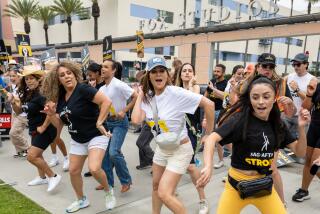Digitally altered photos and body image: Look at the retouching
- Share via
Digitally-altered photographs in magazines and beyond -- a pimple fuzzed out here, a crooked nose reshaped there -- can be nice to look at. But as photo retouching has become more widespread, scientists worry that such idealized images have negative effects too, making people less satisfied with their own, less-than-perfect looks.
When the website jezebel.com publicized apparent alterations to a photograph of the singer Faith Hill from a 2007 Redbook cover, readers recoiled. This summer, the American Medical Assn. called on advertising associations to develop guidelines to discourage changing photographs in a way that might “promote unrealistic expectations of appropriate body image.”
How to implement such guidelines? One possibility: Simply tell viewers how much an image has been altered.
Computer scientists at Dartmouth University have come up with a “perceptually meaningful” way to quantify how much a photo has been retouched -- a rating that they say could “inform consumers of how much a photo has strayed from reality.” Eric Kee and Hany Farid analyzed 468 original and retouched photos collected from online sources. They used computer algorithms to analyze alterations to the photos, developing eight “summary statistics” to describe how much an image had been altered. These described geometric modifications -- as in the thinning of a waist or improvements in posture -- as well as photometric changes, such as smoothing filters that improve skin tone and texture.
Kee and Farid combined the summary statistics to rate how much photos had been retouched. To verify that their ratings reflected the impressions retouching made on viewers, they compared their ratings to human subjects’ observed estimates of how much the photos had been altered. They found that the measurements correlated well.
The results were published Monday in the journal Proceedings of the National Academies of Science. Kee and Farid’s work was funded by a grant from the National Science Foundation, as well as gifts from Microsoft and Adobe Systems, the latter the company that created Photoshop.
Read the Proceedings of the National Academies of Science study here.
Return to the Booster Shots blog.







